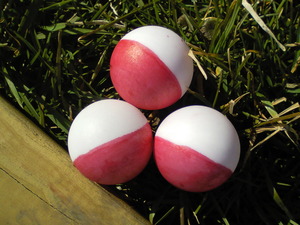One of the oldest living creatures of the sea are more fascinating than odd, or maybe both- you decide.
Have you ever heard of a Geoduck? Well the first clue is, it is the furthest thing from a duck, although it does love the water. Pronounced easily as – Gooey duck, it is a strange looking clam that can grow to be 18 to 20 inches in length! These fascinating mollusks have a musky looking appearance and can come across as repulsive to some.
After watching a short clip on A&E;’s Dirty Jobs about theses interesting creatures, I decided to dig deeper and see what makes these creatures so unique.
These phallus shaped fishy smelling clams are not only intriguing to look at, although they have no face and the only entertaining thing about them is their good looks.
They have long caught the attention of shell farmers, and they have found ways to harvest them in the wild to make money.
The Geoduck lives deep under the waters and sediments of the northern pacific areas of the US and Canada. Burying themselves in a foot of sand and other silt, they will continue to burrow up to a foot a year! Once they dig themselves over three feet deep, they settle in that spot for sometimes over 100 years. There have been reports that some Geoducks have lived to be even 145 years old!
They are the largest burrowing clam in the world and can weigh as many 12 pounds or more.
How does one even find a Geoduck? They can first be seen as little water spouts on the ocean shorelines, popping out and spouting out water. This appear to look like some underwater geyser getting ready to erupt, but rest assured it is just a 100 year old clam, spouting out some excess seawater. They have a peculiar phallus shape that protrude from their clam like shell. Personally I think they resemble a large male genitalia.
Geoducks reproduce only annually, in an effort to spawn and create even more freaks of nature. Yes, they do in fact have separate sexes, and the females release up to 10 million eggs at a time to be fertilized by the males. In the late spring and summer when waters are very warm, they spawn in the bottom of a water column until they mature about three years later, then they become adults and the process repeats itself.
Name one reason why we should even care about a Geoduck? Well, some believe the flesh of the Mollusk is a somewhat of a delicacy, and restaurants and merchants will pay top dollar for these creatures flesh to bring it to their tables.
Here is a popular recipe for Geoduck Chowder:
Note: Be sure to remove the chowder base from the heat before adding Geoduck, the heat from the chowder will cook the meat while leaving it sweet and tender.
1 cup of short grain rice
2 tbsp of white miso paste
8 cups of chicken stock or water
Salt and pepper to taste
1 tbsp of ginger
1 small geoduck, trimmed and sliced thin
2 tbsp of sesame oil
½ cup of corn flakes
3 green onions finely chopped
In a large saucepan or soup pot, combine rice and stock or water and bring to a boil. Watch carefully to avoid boiling over. Turn heat to low and simmer for 1 hour or until rice grains are soft and broken up. Allow to cool slightly then process in food processor or blender until smooth. Add more stock if soup is too thick and return to pot.
Bring rice chowder to a boil, add miso paste and stir to mix well and season with salt and pepper to taste. Add ginger and cook for 1 minute to infuse flavors. Remove from heat, add Geoduck slices and stir. Divide into bowls, garnish with a drizzle of sesame oil, a sprinkle of corn flakes and green onions and serve immediately and enjoy!
So if you ever happen to be visiting the Northern Pacific area, after dinner why not take a stroll on the beach, collect some sea shells, but remember what lies below the beach, you may just take home something more than you what you bargained for.



